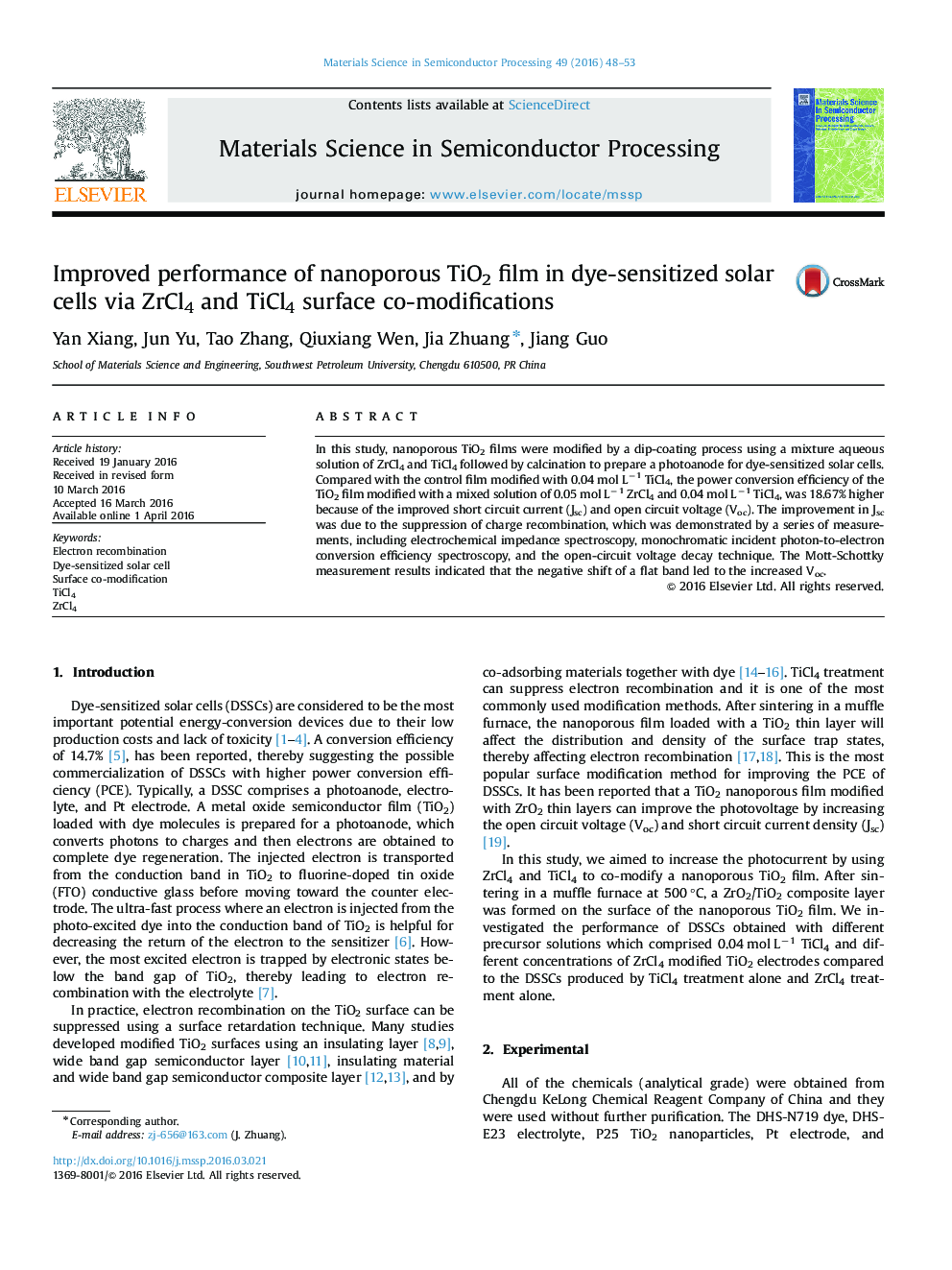| Article ID | Journal | Published Year | Pages | File Type |
|---|---|---|---|---|
| 727846 | Materials Science in Semiconductor Processing | 2016 | 6 Pages |
In this study, nanoporous TiO2 films were modified by a dip-coating process using a mixture aqueous solution of ZrCl4 and TiCl4 followed by calcination to prepare a photoanode for dye-sensitized solar cells. Compared with the control film modified with 0.04 mol L−1 TiCl4, the power conversion efficiency of the TiO2 film modified with a mixed solution of 0.05 mol L−1 ZrCl4 and 0.04 mol L−1 TiCl4, was 18.67% higher because of the improved short circuit current (Jsc) and open circuit voltage (Voc). The improvement in Jsc was due to the suppression of charge recombination, which was demonstrated by a series of measurements, including electrochemical impedance spectroscopy, monochromatic incident photon-to-electron conversion efficiency spectroscopy, and the open-circuit voltage decay technique. The Mott-Schottky measurement results indicated that the negative shift of a flat band led to the increased Voc.
